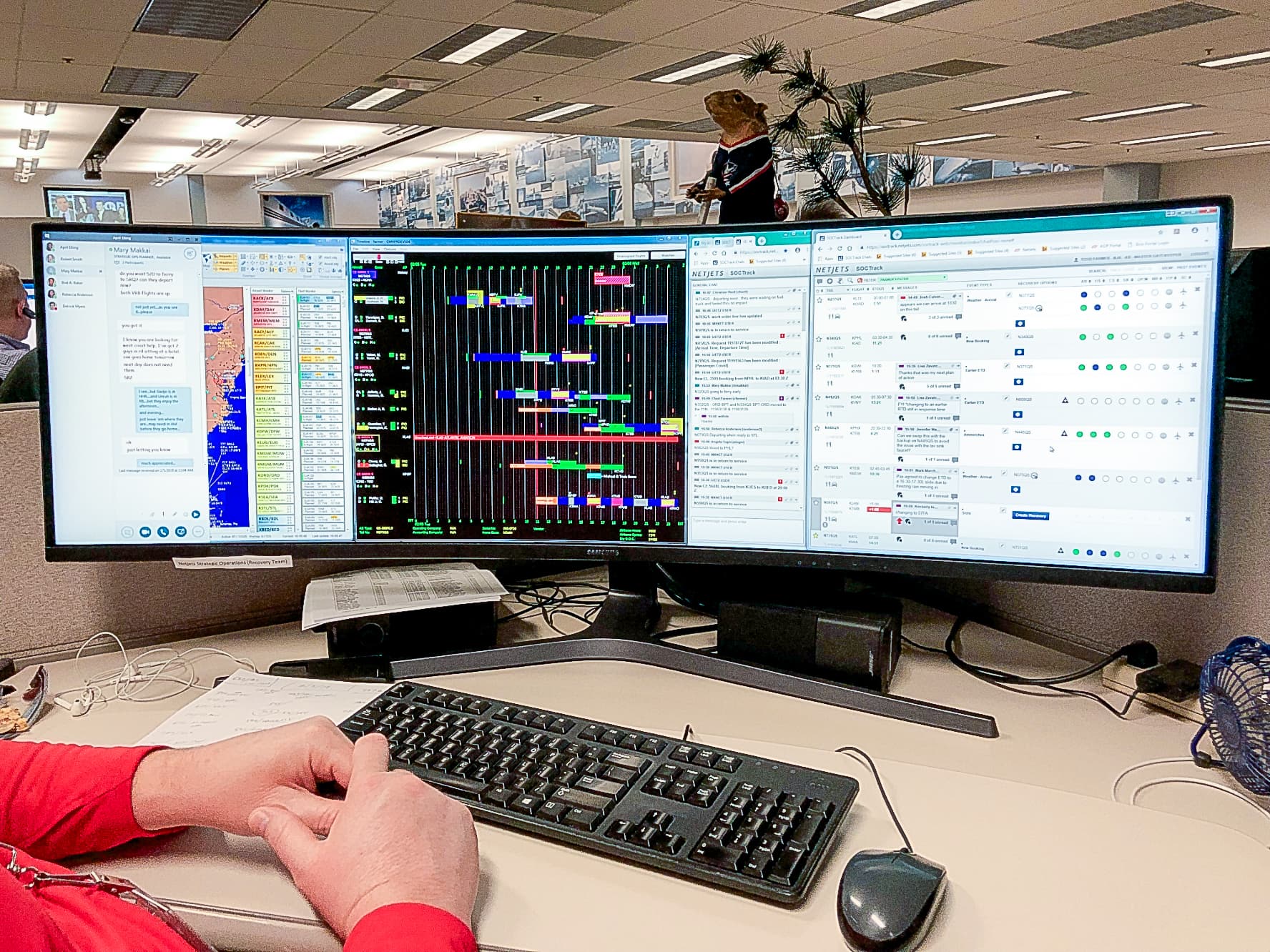But wait, it’s more than that
Stepping away from the Macbook and learning more about a user’s day-to-day turned a feature for a single user group into a tool that fostered realtime multidisciplinary collaboration
Ask
Design a new feature for a specific user
Outcome
By identifying user and engineering needs, we delivered a portable, feasible solution with low cognitive load to a broader audience.
The Situation
Airlines scheduling flights has traditionally been a manual process. It requires negotiating many factors including available aircraft, available crew, passengers, home airport, destination, flight paths and more. NetJets created a new tool called Fusion, leveraging the power of AI to calculate all these variables at scale, to create flight schedules much more efficiently and optimize flight operations workflows.
The Ask
Design the experience for the new flight recovery feature for ‘day-of’ schedulers

What is flight recovery?
Recovery refers to the steps an airline takes to get operations back on schedule. For NetJets flight operations, this usually involves rerouting aircraft and crew to replace a scheduled flight when an aircraft experiences a breakdown.
Reviewing the Initial Concept

Initial Concept developed by a former designer
Prior to me being hired at NetJets, a former designer had concepted out the recovery feature. When I reviewed this with the engineering team, it was discovered that the front-end engineers were dreading producing the proposed experience. They were uncertain how they would render the dynamic schedule component.
Takeaways
The engineering team had major concerns on how they would create this experience
Understanding the Target User Group
Observing Flight Operations
I arranged time to sit with schedulers and observe what happens in the flight operations center while getting a closer look at the flight recovery process.

The scheduler’s workspace
Takeaways
A scheduler’s monitor is filled with tools necessary to do his/her job and none of them can be replaced. There is no room to include another one.
The Timeline—the visual representation of the flight schedule—has a distinct visual language. Though it’s not necessarily elegant, a scheduler can consume it instantaneously.
Flight recovery takes a village to set into motion. It is also requires involvement from maintenance, dispatch, meteorologists, and customer service.

Comparison of the visual language used everyday vs. the initial concept
The Solution
A feasible, tablet-optimized experience for the entire flight operations team
Takeaways
Optimized layouts for tablets allowed for Fusion Recovery to be a decision-making tool used in cross-functional conversations that were already occuring.
Schedulers preferred keeping the visual language the same as the timeline and the engineering team was more comfortable developing the revised design.
By involving the schedulers throughout the design process, all pertinent information needed to make recovery decisions was always at their finger tips throughout the experience.

©2024 Aaron J Cook. All rights reserved.
Let’s Talk